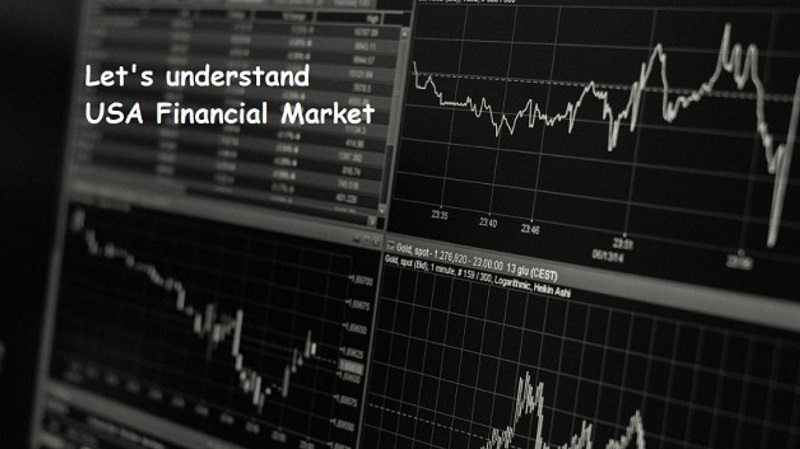Page Contents
Introduction
The U.S. financial market is effectively the biggest on the planet. However, that position stands to be tested by a bound-together European monetary market, in numerous regards, the most developed. It additionally has the
- The best variety of foundations
- The greatest assortment of instruments
- The most profoundly created subordinate business sectors.
In numerous regions of money, it leads to advancement. It is likewise perhaps the most particular monetary framework in the world. Portrayed by a strangely parochial arrangement of laws and guidelines that both debilitate rivalry and shield failure. Given these abnormalities, which are obvious to even the most easygoing understudy of monetary frameworks. The U.S. framework isn’t one that different nations with less completely created economies and monetary frameworks would be very much encouraged to copy, at any rate not in everything about. Be that as it may, learning from a cautious assessment of both the qualities and shortcomings of the U.S. framework.
Major US financial Market
New York Stock Exchange
NYSE is the major US financial market. The NYSE is a stock trade situated in New York, established in 1790.
- In April 2007, the New York Stock Exchange converged with a European stock trade known as Euronext to shape what is now NYSE Euronext.
- NYSE Euronext additionally claims NYSE Arca (some time ago the Pacific Exchange).
- In request to be recorded on the New York Stock Exchange, an organization should have upwards of $ 4 million in investor’s equity.
- Locals and guests can likewise see the trade’s structure on Wall Street in New York City- – albeit over 80% of exchanging is currently done electronically.
The American Stock Exchange (AMEX) OR US financial market likewise a mainstream New York-base stock trade. Establish in 2008. Not at all like the Nasdaq and NYSE, AMEX zeroed in on trade exchanged assets (ETFs).
National Association of Securities Dealers Automated Quotation System (Nasdaq)
Dissimilar to AMEX, the Nasdaq is the second biggest US financial market. It is an electronic screen-based market. Made by the National Association of Securities Dealers (NASD) in 1971, it is well known in light of its mechanized framework and moderately present day, when contrasted with the New York Stock Exchange. It at present offers lower posting expenses than NYSE and incorporates the absolute biggest organizations, for example, innovation monsters Apple, Google, Amazon, and Microsoft.
Characteristics of US financial System
The US. financial market has three attributes that separate it from the monetary frameworks of different nations. These are its
- Limit level of discontinuity (Fragmentation), as reflected in the colossal number of individual foundations;
- Its unmatched level of variety( Diversity)
- The family member’s significance of direct money. For example the raising of assets by the issue of open-market instruments like stocks, securities, and business paper.
1- Fragmentation
The Fragmentation of the U.S. monetary framework is generally apparent in the design of the financial business. It comprises almost 13,000 autonomously contracted business banks of extraordinarily fluctuating size and enhancement. In any case, the fracture is likewise clear in the wide scope of various sorts of monetary organizations. In any event at the administrative level, between discrete organizations for every one of the significant classes of foundations.
This discontinuity is expected to be
- Incomplete to the verifiable mishap.
- Halfway to a solid obligation to states’ privileges inside the government framework.
- Halfway to successful campaigning by little banks looking for security from the opposition of enormous organizations.
Now, spreading by both state-sanction banks and (under the arrangement of reverence to state law optimize in the McFadden Act of 1927 modified by the Banking Act of 1933) governmentally sanction banks are representing by the laws of the individual states. Until as of late, a significant number of these laws either denied or seriously confined branch banking.
2- Un-matched Level of Variety
The second distinguishing attribute for the U.S. monetary framework which, notwithstanding, doesn’t recognize it from the monetary frameworks of a few other industrialized nations is its extraordinary variety, as reflected in the huge number of various sorts of organizations and the colossal contrasts in their level of specialization. Consequently, there are at any rate 20 genuinely all-around characterize and unmistakable kinds of monetary establishments in the United States and impressive heterogeneity inside every one of these essential sorts. Simultaneously, there is impressive cover in their capacities. For
- Model
- Reserve funds
- Credit affiliations
- Common investment funds banks
- Home loan banking organizations
These are largely dynamic on the resource side is starting and adjusting private home loans, albeit the initial two of these by and large hold the home loans in their portfolios while contract banks sell generally all of theirs to institutional financial investors.
3- Relative Importance of Direct Finance
The third recognizing normal for the U.S. monetary framework is the surprisingly high extent of credit reaching out through the offer of protection. Like the monetary frameworks of numerous different nations, that of the US is described by a combination of intermediation money. It includes loaning to extreme borrowers by monetary mediators that at that point sell their own “circuitous protections” as stores. Other commitments to people in general, and direct account, in which people, in general, broadens credit straightforwardly to a definitive borrower through the acquisition of essential protections in the open market. It is at times contending that the family member significance of the protection markets in the U.S. monetary framework is proof of its high-level condition of advancement.
More significantly, the decision between the two may not be pretty much as obvious as was once accepted (Goodman, Cumming, and Kumekawa, 1984; Langohr furthermore, Santomero, 1984). At last, monetary organizations are progressive, though to fluctuating degrees, associated with both customary intermediation markets. For example, bank loans to businesses and the buy and offer of monetary instruments in the coordinated capital business sectors.











